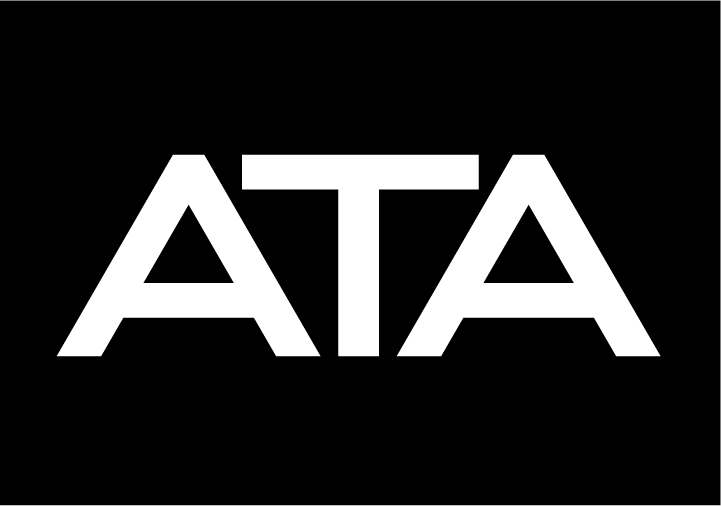Year-end planning: Take advantage of business provisions that may expire on Dec. 31, 2011
Although it’s only September, taxpayers are well-advised to consider how to make the most of tax breaks that are available this year but may not be around next year, or may survive only in diluted form. Given the wrenching political battle that played out in July over deficits and the debt ceiling, many tax provisions expiring at the end of this year may not be given another lease on life. Those provisions that aid a particular industry or group of taxpayers could be the most at risk. This article reviews the tax breaks for businesses that are available right now but may sunset on Dec. 31, 2011.
Tax Credits
Research credit. The research credit only applies for amounts paid or accrued before Jan. 1, 2012. ( Code Sec. 41(h)(1) ) In general, the research credit equals the sum of: (1) 20% of the excess (if any) of the qualified research expenses for the tax year over a base amount, (unless the taxpayer elected an alternative simplified research credit); (2) the university basic research credit (i.e., 20% of the basic research payments); (3) 20% of the taxpayer’s expenditures on qualified energy research undertaken by an energy research consortium.
Work Opportunity Tax Credit (WOTC). The WOTC) allows employers who hire members of certain targeted groups to get a credit against income tax of a percentage of first-year wages up to $6,000 per employee ($12,000 for qualified veterans; and $3,000 for qualified summer youth employees). Where the employee is a long-term family assistance (LTFA) recipient, the WOTC is a percentage of first and second year wages, up to $10,000 per employee. Generally, the percentage of qualifying wages is 40% of first-year wages; it’s 25% for employees who have completed at least 120 hours, but less than 400 hours of service for the employer. For LTFA recipients, it includes an additional 50% of qualified second-year wages. The term “wages” for WOTC purposes doesn’t include any amount paid or incurred for an individual who begins work after Dec. 31, 2011. ( Code Sec. 51(c)(4) )
New markets tax credit. Under Code Sec. 45D , a taxpayer who holds a qualified equity investment in a qualified community development entity (CDE) may be entitled to a NMTC. The credit is 39% of the qualified equity investment during a 7-year credit period. The investor may claim 5% in each of the first 3 years and 6% in each of the final 4 years. There is a national, annual limitation on the amount designated under Code Sec. 45D . Under current law, the last NMTC dollar limitation is for 2011. ( Code Sec. 45D(f)(1) )
Differential wage payment credit for employers. Under Code Sec. 45P , eligible small business employers that pay differential wages can claim a credit equal to 20% of up to $20,000 of differential pay made to an employee during the tax year. Differential wages are payments to employees for periods that they are called to active duty with the U.S. uniformed services (for more than 30 days) that represent all or part of the wages that they would have otherwise received from the employer. An eligible small business employer is one that: (1) employed on average less than 50 employees on business days during the tax year; and (2) under a written plan, provides eligible differential wage payments to each of its qualified employees. A qualified employee is one who has been an employee for the 91-day period immediately preceding the period for which any differential wage payment is made. This credit won’t be available for differential wages paid after Dec. 31, 2011. ( Code Sec. 45P(f) )
New energy efficient home credit. An eligible contractor can claim a credit of $2,000 or $1,000 for each qualified new energy efficient home either constructed by the contractor or acquired by a person from the contractor for use as a residence during the tax year. The credit won’t apply to homes acquired after Dec. 31, 2011. ( Code Sec. 45L(g) )
Tax Deductions
100% bonus depreciation. The 100% bonus depreciation allowance applies only for qualified property acquired and placed in service after Sept. 8, 2010 and before Jan. 1, 2012 (placed in service before Jan. 1, 2013 for certain aircraft and long-production-period property). For qualified property acquired and placed in service after Dec. 31, 2011 and before Jan. 1, 2013 (placed in service after Dec. 31, 2012 and before Jan. 1, 2014 for certain aircraft and long-production-period property), a 50% bonus depreciation allowance will apply. ( Code Sec. 168(k)(1) , Code Sec. 168(k)(5) )
Expensing allowance. The maximum amount that may be expensed under Code Sec. 179 for tax years beginning in 2010 or 2011 is $500,000. For tax years beginning in 2012, the maximum amount will be $125,000 (indexed for inflation with 2006 as the base year). For tax years beginning in 2010 and 2011, the maximum annual expensing amount generally is reduced dollar-for-dollar by the amount of section 179 property placed in service during the tax year in excess of $2,000,000 (the investment ceiling). For tax years beginning in 2012, the investment ceiling will be $500,000 (indexed for inflation with 2006 as the base year). ( Code Sec. 179(b) )
Additionally, if placed in service in a tax year beginning in 2010 or 2011, up to $250,000 per year of qualified real property is eligible for Code Sec. 179 expensing. ( Code Sec. 179(f)(1) , Code Sec. 179(f)(3) ) Qualified real property is one of the following types of property: (1) qualified leasehold improvement property, (2) qualified restaurant property or (3) qualified retail improvement property. ( Code Sec. 179(f)(2) )
15-year writeoff for specialized realty assets. Qualified leasehold improvement property, qualified restaurant property and qualified retail improvement property placed in service after Dec. 31, 2011, will no longer be eligible for a 15-year depreciation writeoff under MACRS. ( Code Sec. 168(e)(3)(E)(iv) , Code Sec. 168(e)(3)(E)(v) , and Code Sec. 168(e)(3)(E)(ix) ) Instead, such property will have to be depreciated over 39 years.
Enhanced charitable contribution deductions. The following enhanced charitable contribution rules will not apply to contributions made after Dec. 31, 2011:
… C corporation’s enhanced charitable contribution deduction equal to the lesser of (a) basis plus half of the property’s appreciation, or (b) twice the property’s basis, for contributions of food inventory that is apparently wholesome food, i.e., meant for human consumption and meeting certain quality and labeling standards. The enhanced contribution is also available for a taxpayer other than a C corporation, but the aggregate amount of contributions of apparently wholesome food that may be taken into account for the tax year can’t exceed 10% of the taxpayer’s aggregate net income for that tax year from all trades or businesses from which those contributions were made for that tax year. ( Code Sec. 170(e)(3)(C)(iv) )
… C corporation’s enhanced charitable contribution deduction equal to the lesser of (a) basis plus half of the property’s appreciation, or (b) twice the property’s basis, for qualified contributions of book inventory to certain public schools if certain donee certification requirements are met. ( Code Sec. 170(e)(3)(D)(iv) )
… C corporation’s enhanced charitable contribution deduction equal to the lesser of (a) basis plus half of the property’s appreciation, or (b) twice the property’s basis, for certain contributions of computer technology or equipment (software, computer or peripheral equipment, and fiber optic cable) to schools or libraries for use in the U.S. for educational purposes that are related to the donee’s purpose or function. ( Code Sec. 170(e)(6)(G) )
Lower shareholder basis adjustments for charitable contributions by S corporations. A temporary tax incentive to encourage S corporations to make charitable donations of appreciated assets is available for contributions made in tax years beginning before Jan. 1, 2012 ( Code Sec. 1367(a)(2) ) Generally, an S corporation’s charitable contribution of property provides its shareholders with a fair market value (FMV) deduction for gifts of property. In association with the charitable gift, shareholders must reduce their basis of shares in the corporation. Under the temporary incentive, shareholders reduce their basis in the stock of the S corporation by their pro rata share of the adjusted basis of the contributed property, rather than by the FMV of the charitable contribution that flows through to the shareholder. The lower basis reduction results in a proportionately larger gain when the stock is later sold by the shareholder. Thus, the shareholder benefits by having that reduction determined by the basis of the property (which is a smaller amount) rather than its FMV (a larger amount). For example, if in 2011 an S corporation with one individual shareholder makes a charitable contribution of stock with a basis of $100 and a FMV of $500, the shareholder is treated as having made a $500 charitable contribution and reduces the basis of his S corporation stock by $100. If the S corporation makes the contribution in tax years beginning after 2011, the shareholder will be treated as having made a $500 charitable contribution and will reduce the basis of his S corporation stock by $500.
Expensing election for costs of film and TV production. Taxpayers may elect to expense production costs of qualified film and television (TV) productions in the U.S., but only for productions commencing before Jan. 1, 2012. ( Code Sec. 181(f) ) Expensing doesn’t apply to the part of the cost of any qualifying film or TV production that exceeded $15 million for each qualifying production. The limit is $20 million if production expenses are “significantly incurred” in certain low-income communities or isolated areas of distress.
Expensing of environmental remediation costs. Taxpayers may elect to treat qualified environmental remediation expenses that would otherwise be chargeable to a capital account as deductible in the year paid or incurred, but only if the expenses are paid or incurred before Jan. 1, 2012. ( Code Sec. 198(h) ) To be deductible currently, pre-2012 expenses must be paid or incurred in connection with the abatement or control of hazardous substances (including petroleum products) at a qualified contaminated site.
Domestic production activities deduction for Puerto Rico. The Code Sec. 199 domestic production activities deduction is available only if, among other conditions, the taxpayer has domestic production gross receipts (DPGR) from: (1) any sale, exchange or other disposition, or any lease, rental or license, of qualifying production property manufactured, produced, grown or extracted by the taxpayer in whole or in significant part within the U.S.; (2) any sale, exchange, etc., of qualified films produced by the taxpayer; (3) any sale, exchange or other disposition of electricity, natural gas, or potable water produced by the taxpayer in the U.S.; (4) construction activities performed in the U.S.; or (5) engineering or architectural services performed in the U.S. for construction projects located in the U.S. For a taxpayer’s first six tax years beginning after 2005 and before Jan. 1, 2012, Puerto Rico is included in the term “U.S.” in determining DPGR, but only if all of the taxpayer’s Puerto Rico-sourced gross receipts are taxable under the federal income tax for individuals or corporations. ( Code Sec. 199(d)(8)(C) )
Empowerment Zone tax breaks. The designation of an economically depressed census tract as an “Empowerment Zone” makes businesses and individual residents within such a Zone eligible for special tax incentives, including: the 20% wage credit under Code Sec. 1396 ; liberalized Code Sec. 179 expensing rules ($35,000 extra expensing and the break allowing only 50% of expensing eligible property to be counted for purposes of the investment-based phaseout of expensing); tax-exempt bond financing under Code Sec. 1394 ; and deferral under Code Sec. 1397B of capital gains tax on sale of qualified assets sold and replaced. Empowerment Zone designations expire on Dec. 31, 2011. ( Code Sec. 1391(d) )
Foreign Provisions
Subpart F exception for active financing income. Certain income from the active conduct of a banking, financing or similar business, or from the conduct of an insurance business (collectively referred to as “active financing income”), is temporarily excluded from the definition of Subpart F income, but only for tax years of foreign corporations beginning after Dec. 31, ’98 and before Jan. 1, 2012, and for tax years of U.S. shareholders with or within which any such tax year of the foreign corporation ends. ( Code Sec. 953(e)(10) and Code Sec. 954(h)(9) )
Look-through rule for payments between related CFCs under foreign personal holding company income rules. For tax years of a foreign corporation before Jan. 1, 2012, and tax years of U.S. shareholders with or within which such tax years of foreign corporations end, dividends, interest, rents, and royalties received by one controlled foreign corporation (CFC) from a related CFC are not treated as foreign personal holding company income (FPHCI) to the extent attributable or properly allocable to non-subpart-F income, or income that is not effectively connected with the conduct of a U.S. trade or business of the payor (look-through treatment). ( Code Sec. 954(c)(6)(C) )
Treatment of RIC as qualified investment entity. Gain from the disposition of a U.S. real property interest (USRPI) by a foreign person is treated as income effectively connected with a U.S. trade or business and is subject to tax and to Code Sec. 1445 withholding under Foreign Investment in Real Property Tax Act (FIRPTA) provisions. A USRPI does not include an interest in a domestically controlled “qualified investment entity.” A regulated investment company (RIC) is included within the definition of a “qualified investment entity” through 2011. ( Code Sec. 897(h)(4)(A) ).
Miscellaneous Provisions Expiring on Dec. 31, 2011
The 7-year straight line cost recovery period for motorsports entertainment complexes won’t apply for property placed in service after Dec. 31, 2011. ( Code Sec. 168(i)(15)(D) )
The Indian employment credit only applies for tax years beginning before Jan. 1, 2012. ( Code Sec. 45A(f) )
The railroad track maintenance credit applies through 2011. ( Code Sec. 45G(f) )
The mine rescue team training credit applies through 2011. ( Code Sec. 45N(e) )
For tax years beginning after Dec. 31, 2008, and before Jan. 1, 2012, the 100%-of-taxable-income limitation of percentage depletion for oil and gas from marginal wells applicable to independent producers and royalty holders owning interests in marginal wells is suspended. For tax years beginning on or after Jan. 1, 2012, the 100% of the taxable income limit returns for marginal wells. ( Code Sec. 613A(c)(6)(H) )
A taxpayer may claim a 30% credit for the cost of installing qualified alternative vehicle refueling property for use in the taxpayer’s trade or business (up to $30,000 maximum per year per location) or installed at the taxpayer’s principal residence (up to $1,000 per year per location). This credit won’t apply to property (except for hydrogen refueling property) placed in service after Dec. 31, 2011. ( Code Sec. 30C(g)(2) )
Under the energy efficient appliance credit, for appliances produced in 2011, and depending on their specifications, manufacturers can claim a (i) $25, $50, or $75 credit for each qualifying dishwasher; (ii) $175 or $225 credit for each qualifying clothes washer; (iii) $150 or $200 credit for each qualifying refrigerator. ( Code Sec. 45M )
The designation of the District of Columbia Enterprise Zone (DC Zone) under Code Sec. 1400(f) applies through Dec. 31, 2011. ( Code Sec. 1400(f) ) This designation renders businesses and individual residents within the Zone eligible for special tax incentives, including additional expensing under Code Sec. 179 and a 20% wage credit under Code Sec. 1396 for eligible DC Zone employers.
Accelerated depreciation for qualified Indian reservation property applies for property placed in service through 2011. ( Code Sec. 168(j) )
The election to expense 50% of the cost of advanced mine safety equipment applies through 2011. ( Code Sec. 179E(g) )
The increase in the limit on cover over of rum excise taxes to Puerto Rico and the Virgin Islands applies through 2011. ( Code Sec. 7652(f) )
The American Samoa economic development credit applies for the first six tax years of a taxpayer beginning after Dec. 31, 2005 and before Jan. 1, 2012. (Sec. 119 of P.L. 109-432 , as amended by Sec. 756 of P.L. 111-312 ).
Source: (c) 2011 Thomson Reuters/RIA. All rights reserved.









